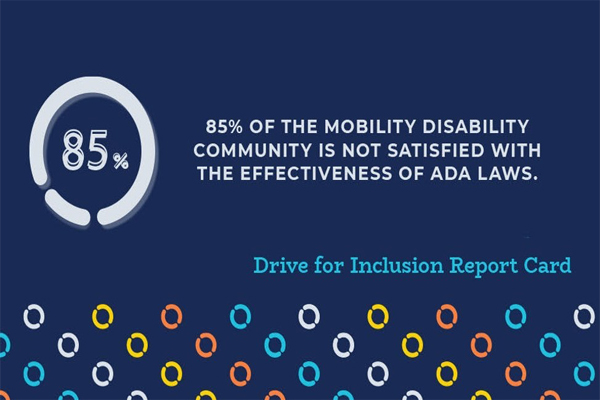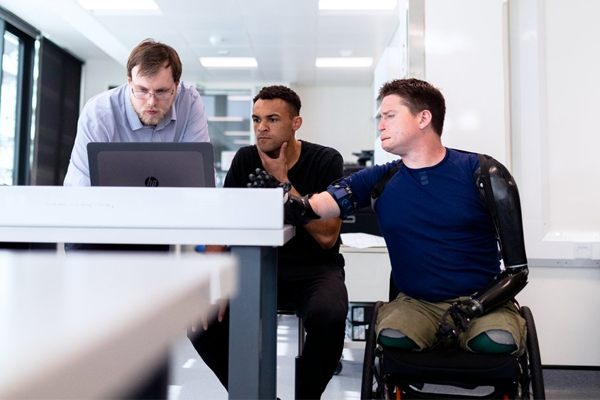BraunAbility’s latest research has revealed that 85% of US citizens with disabilities are dissatisfied with the effectiveness of the Americans with Disabilities Act (ADA). The report, entitled Drive for Inclusion Report Card, sheds light on the state of inclusion for the mobility disability community.
The report reveals that the needs of people with mobility disabilities continue to be overlooked despite the fact that the ADA became law some 30 years ago. It found that only 15% of the mobility disability community surveyed are satisfied with the current effectiveness of ADA laws.
In addition, nearly half still feel excluded by society most of the time because of their mobility impairment, particularly in business and the workplace. People with mobility impairments represent the most common type of disability in the US affecting 1 in 7 adults, according to BraunAbility. That number is expected to increase in the coming years.
TOP BARRIER TO INCLUSION
Although around 68% of the general public believe people with mobility challenges are “fairly accommodated and included in most aspects of society”, only 23% of those with disabilities actually agree with that statement. The top barrier to achieving inclusion is the lack of involvement of people with mobility issues in the design and development of mobility accommodations, revealed BraunAbility.
Around 40% believe mobility challenges are rarely considered when organisations and governments develop programmes or accessibility accommodations under the category of diversity and inclusion. BraunAbility’s findings reveal that best solution to solve the lack of inclusion is to simply include people with disabilities in the design and development of products or services.

Commenting on the research results, Sam Schmidt, Member of BraunAbility’s Drive for Inclusion Advisory Board and former IndyCar driver, who is also a wheelchair user, stated: “The ADA has made tremendous strides toward advancing life-changing access and inclusion for those of us with mobility impairments, and all people with a disability. But we also recognise that to continue advancing access and inclusion for the next 30 years, it’s imperative that the very people who need and use the accommodations are consulted early in the process. Being part of the BraunAbility’s Driving Force is a first step in seeing this become a reality.”
DRIVE FOR INCLUSION
At a time when the pandemic is challenging us all to create new accommodations, and society at large is seeking heightened awareness around social justice, “it’s imperative this new level of empathy extends to those with mobility challenges”, added BraunAbility’s President Staci Kroon.
BraunAbility launched Drive for Inclusion in a bid to amplify the voices of people with mobility challenges and their caregivers. Click here for more information on the survey and/or to find out more about the Drive for Inclusion initiative.






































